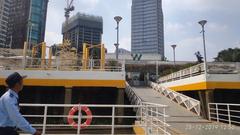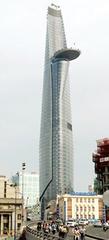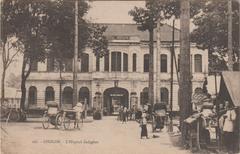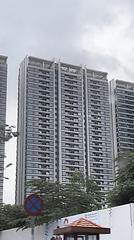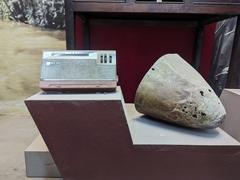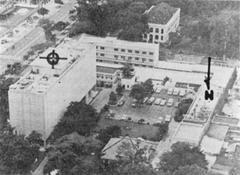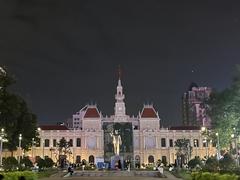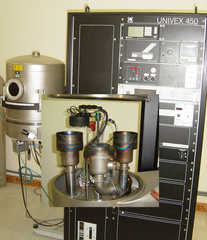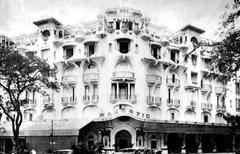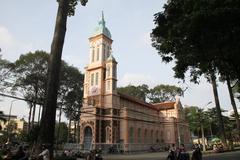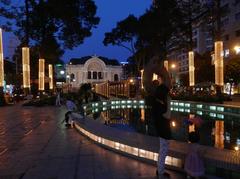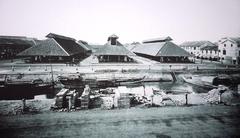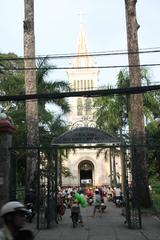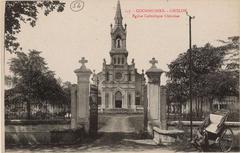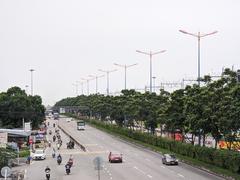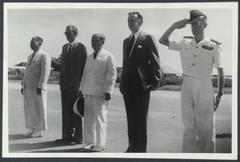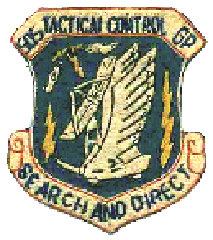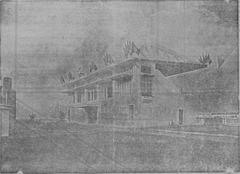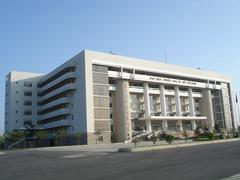
Saigon Bridge Visiting Hours, Tickets, and Travel Guide
Date: 04/07/2025
Introduction
The Saigon Bridge (Cầu Sài Gòn) is not only a vital transportation artery in Ho Chi Minh City but also a landmark rich in history, culture, and urban significance. Spanning the Saigon River, it connects Bình Thạnh District with the eastern districts—now part of Thủ Đức City—serving millions of commuters and visitors each year. From its pivotal role in the Vietnam War to its present status as a symbol of modernization, the Saigon Bridge stands as a testament to the city’s resilience and progress (Wikipedia, Holidify, discovermagazines.com).
This comprehensive guide provides all the essential information for visiting the Saigon Bridge, including its historical background, visiting hours, ticketing details, travel tips, nearby attractions, and its cultural and architectural significance.
Contents
- Historical Overview
- Visiting Hours, Tickets, and Travel Tips
- Architectural and Engineering Features
- Cultural and Urban Impact
- Nearby Attractions
- Frequently Asked Questions (FAQ)
- Conclusion
- Sources
Historical Overview
Construction and Early Development
Built in the early 1960s and officially opened in 1961, the Saigon Bridge was originally known as Newport Bridge. Designed to meet the transportation needs of the era, it features four lanes for automobiles and dedicated paths for motorcycles and bicycles. At the time of its completion, it was the only major crossing in the area, crucial for urban expansion (Wikipedia).
Role During the Vietnam War
Strategic Importance
The bridge was a lifeline during the Vietnam War, serving as the main eastern gateway to Saigon for military and civilian movements (Holidify).
The Tet Offensive (1968) and the Fall of Saigon (1975)
The Saigon Bridge became a battleground during the Tet Offensive in 1968 and again in April 1975, when its capture marked the collapse of the South Vietnamese government and the end of the war (Wikipedia, Holidify).
Post-War Reconstruction and Modernization
After reunification, the bridge was rapidly repaired and continued to underpin the city’s growth. To address increasing traffic, the adjacent Saigon 2 Bridge was built in 2013, doubling the crossing capacity (Wikipedia).
Visiting Hours, Tickets, and Travel Tips
Visiting Hours
- Saigon Bridge: Open 24 hours a day, 7 days a week. There are no restricted hours for crossing or visiting.
- Thu Thiem Pedestrian Bridge (new adjacent structure): Open daily from 6:00 AM to 10:00 PM (VietnamNet).
Tickets
- No entrance fee is required for either bridge. Both are public infrastructure accessible to all.
How to Get There
- By Taxi or Ride-Hailing Apps: Widely available across the city. Fares from District 1 range from 60,000–120,000 VND.
- By Bus: Routes 19, 45, and 150 serve the area.
- By Motorbike: Rentals available, though traffic can be heavy.
- On Foot or Bicycle: Pedestrian and cycling paths exist but exercise caution, especially during rush hour.
Accessibility
The original bridge has narrow sidewalks; the new Thu Thiem Pedestrian Bridge offers universal accessibility, with gentle slopes and wide walkways suitable for all visitors (Takashi Niwa Architects).
Safety and Etiquette
- Remain alert to traffic and use designated paths.
- Keep belongings secure and dress modestly.
- Bring water, sunscreen, and weather-appropriate gear.
Best Times to Visit
- Early Morning (5:30–7:30 AM): Cool temperatures and soft sunrise light.
- Late Afternoon/Evening (4:30–7:00 PM): Stunning sunset views; be aware of rush hour traffic.
- Night: The bridge is beautifully illuminated, offering unique photo opportunities (Lonely Planet).
Architectural and Engineering Features
The original Saigon Bridge is constructed from reinforced concrete, designed to withstand heavy use and challenging river conditions. The adjacent Saigon 2 Bridge features modern engineering and materials, reflecting Ho Chi Minh City’s urban growth.
Thu Thiem Pedestrian Bridge
- Design: Inspired by the nipa palm leaf, symbolizing Southern Vietnam’s ecological heritage.
- Structure: Vietnam’s first space frame steel arch, 187–188 meters span, total length nearly 720 meters, width 6–11 meters.
- Sustainability: ETFE-clad roof for natural light, rainwater recycling, and misting systems.
- Lighting: Designed by Hisaki Kato, providing a captivating night-time spectacle (Takashi Niwa Architects).
Cultural and Urban Impact
The Saigon Bridge is deeply woven into the city’s fabric, symbolizing connection and resilience. It has facilitated economic development, enabled urban expansion, and become a focal point for city festivals and celebrations (discovermagazines.com, Holidify).
The adjacent Thu Thiem Pedestrian Bridge further enhances public space, promoting sustainable urban development and serving as a venue for cultural performances and community gatherings (VietnamNet).
Nearby Attractions
- Nguyen Hue Walking Street: A vibrant pedestrian boulevard in District 1.
- Bach Dang Wharf Park: Riverside relaxation and river views.
- Thu Thiem New Urban Area: Green spaces, cultural venues, and modern architecture.
- War Remnants Museum, Reunification Palace, Notre-Dame Cathedral, Saigon Central Post Office: Key historical sites within easy reach.
Frequently Asked Questions (FAQ)
Q: What are the visiting hours for Saigon Bridge?
A: The Saigon Bridge is open 24/7; the Thu Thiem Pedestrian Bridge is open from 6:00 AM to 10:00 PM.
Q: Is there an entrance fee?
A: No, both bridges are free for public use.
Q: How can I get to Saigon Bridge?
A: By taxi, ride-hailing app, bus, motorbike, or on foot. Multiple routes connect from central Ho Chi Minh City.
Q: Are guided tours available?
A: Yes, city tours often include the bridge and nearby attractions.
Q: Is the bridge accessible for people with disabilities?
A: The Thu Thiem Pedestrian Bridge is fully accessible; the original Saigon Bridge has limited accessibility.
Q: What are the best times to visit for photography?
A: Sunrise and sunset offer the best lighting; night-time is also beautiful thanks to the bridge’s illumination.
Conclusion
The Saigon Bridge is far more than a functional crossing; it’s a living monument to Ho Chi Minh City’s history and transformation. With 24/7 free access, it offers panoramic city views, a window into local life, and proximity to some of Saigon’s most important attractions. The addition of the Thu Thiem Pedestrian Bridge introduces innovative architecture and public space to the area, further enriching the visitor experience. Whether you’re a history buff, an architecture enthusiast, or simply looking for a scenic stroll, the Saigon Bridge area is a must-see.
For travel updates, event information, and guided tour bookings, download the Audiala app and follow our social media channels. Explore our related posts on Ho Chi Minh City’s historical sites and sustainable urban landmarks to make the most of your visit.
Sources
- Wikipedia: Saigon Bridge
- Holidify: Bridges in Vietnam
- Discover Magazines: Saigon Rich in History and Remarkable for Its Quaint Environs
- VietnamNet: Ho Chi Minh City Unveils Groundbreaking Pedestrian Bridge Project
- Takashi Niwa Architects: Thu Thiem Pedestrian Bridge Project
Image alt tags for media:
- “Saigon Bridge at sunset with city skyline”
- “Map showing Saigon Bridge location in Ho Chi Minh City”









